MLB and the Mets have something in common - a cloudy offseason
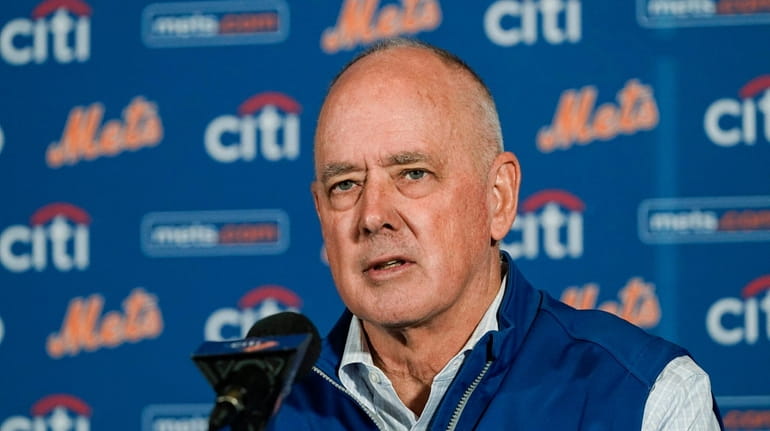
New York Mets president and general manager Sandy Alderson speaks during a news conference before a baseball game against the Miami Marlins Wednesday, Sept. 29, 2021, in New York. (AP Photo/Frank Franklin II) Credit: AP/Frank Franklin II
The general managers’ meetings return to the Carlsbad, California Omni on Tuesday for the unofficial start to baseball’s offseason.
The last time this SoCal resort hosted the event was 2018, when the Mets unveiled Brodie Van Wagenen, an outside-the-box pick because of his agent-only background with CAA.
Remember how radical that choice seemed back then? Especially when the other finalist was the Rays’ Chaim Bloom, who was hired by the Red Sox a year later. But compare that process to what the Mets are going through now, and the selection of Van Wagenen feels almost normal.
At those 2018 meetings, Van Wagenen was celebrated as an intriguing crossover candidate but also viewed with a healthy dose of skepticism. Perhaps his best move all week was having dinner with rising star Pete Alonso and assuring the slugger a spot on the Opening Day roster — regardless of service time implications — if he earned it (Alonso did).
"He’s incredibly smart, capable and a passionate baseball person," Astros GM Jeff Luhnow told USA Today at the time about Van Wagenen’s career switch. "A year from now, we’re not even going to remember he was an agent."
Oddly enough, Luhnow wound up being out of a job before Van Wagenen. He’s still looking for another front-office gig since his 2020 ban for the Astros’ sign-stealing scandal.
Van Wagenen, of course, fell victim to Steve Cohen’s housecleaning upon last November’s $2.45 billion purchase of the Mets. And despite Luhnow’s prediction, Van Wagenen is back on the agent side of things.
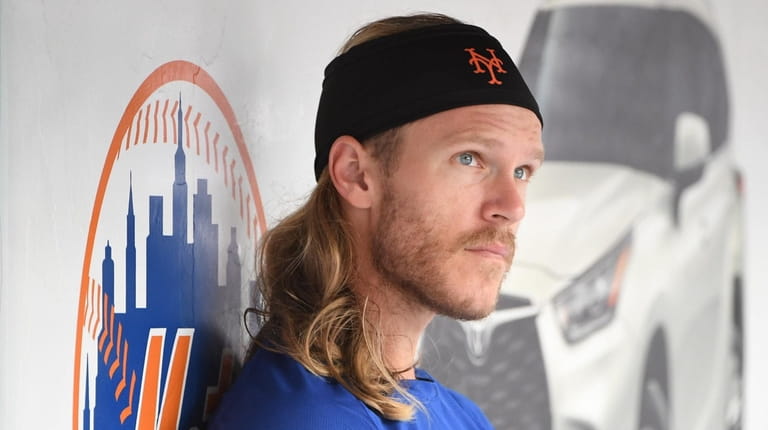
Mets pitcher Noah Syndergaard looks on from the dugout during an MLB baseball game between the New York Mets and the Atlanta Braves at Citi Field on Thursday, July 29, 2021. Credit: Kathleen Malone-Van Dyke
Despite the Mets’ questionable Van Wagenen pick, at least they had a GM for those 2018 meetings. This year, they are expected to arrive in Carlsbad without one, or a president of baseball operations, with Sandy Alderson the only one left to run the front office as the saga of the Mets’ search continues.
Usually, a gathering of the sport’s top executives would make for a great recruiting trip. But the Mets already have blown through more than a dozen of their top choices, with many declining even an interview for the job, so it’s unclear if there will be any eligible candidates in the room this week.
Against this backdrop, with an uncertain offseason ahead, there is work to do in the coming weeks before the sport potentially (likely?) shuts down at midnight Dec. 1, which is when the current CBA expires. What happens between now and then is difficult to forecast, but here are a few trends to consider heading into this week.
PERFECT STORM
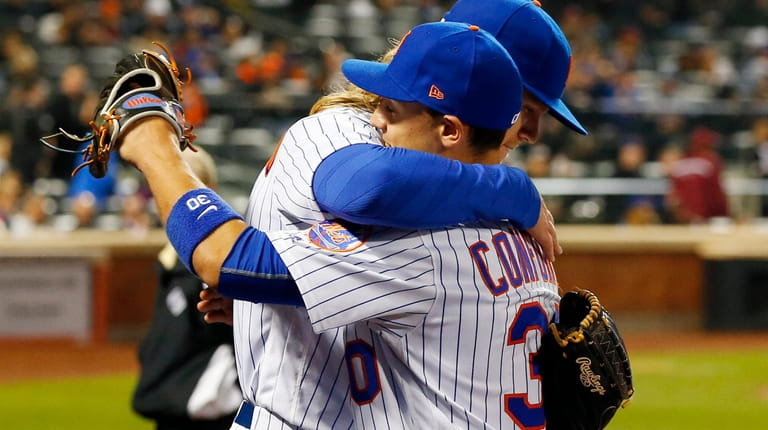
Noah Syndergaard #34 of the New York Mets greets teammate Michael Conforto #30 after his catch at the wall ended the sixth inning against the Philadelphia Phillies at Citi Field on Thursday, Apr. 20, 2017 in the Queens Borough of New York City. Credit: Jim McIsaac
While the NFL typically owns Sundays, this Nov. 7 represents a confluence of huge offseason factors for MLB: the official start of free agency along with the deadline for qualifying offers and the expiration date of many contract options for players.
That’s one big swirling pool of available talent, and yet who will be the first to test the waters? Teams typically take a cautious approach to free agency, letting the market play out for as long as three months before pushing their chips to the middle of the table. But how will clubs handle their business this offseason without knowing the economic rules, which are likely to change once a new CBA is reached?
Some free agents could be tempted to sign earlier than usual and before Dec. 1 to avoid the cloudy future ahead. Then it becomes a matter of teams’ willingness to invest new money in the coming weeks if the salary ramifications are unclear.
As it stands now, the qualifying-offer system still is in place, and to use the Mets as an example, they have extended a one-year, $18.4 million deal to their eligible free agents, Michael Conforto and Noah Syndergaard. Both have until Nov. 17 to accept or reject that offer, and if they turn it down, the Mets will receive a compensatory draft pick from the club that eventually signs them.
There are plenty of other marquee free-agents in that same QO class: Carlos Correa, Corey Seager, Trevor Story, Marcus Semien, Robbie Ray and Freddie Freeman, just to name a few. Players traded during the season are not eligible for the QO, and you can only get it once, which is why Marcus Stroman is not on this list after accepting it last year.
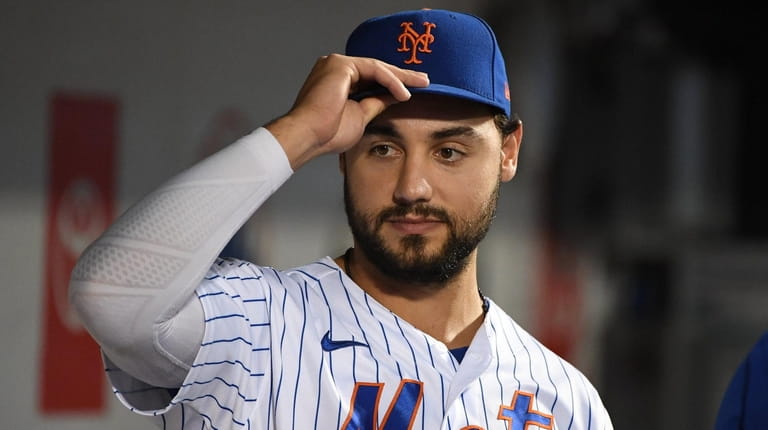
Mets rightfielder Michael Conforto looks on from the dugout before an MLB game against the Phillies at Citi Field on Sept. 19. Credit: Kathleen Malone-Van Dyke
LABOR PAINS
About that CBA, which will be the elephant sitting poolside this week at the Omni: Representatives of MLB and the Players Association are expected to continue negotiations in Carlsbad while the GMs are hobnobbing on campus, but based on the contentious pandemic treaty of 2020, significant progress feels like a fantasy at this point.
If the pressures of COVID-19 couldn’t spur more cooperation for the good of the game, then when the subject is dividing up an $11 billion industry, relying on the two sides’ better angels this time around seems foolish. Sorting out some much-needed rule changes, such as a pitch clock and a universal DH, are relatively quaint details when compared to baseball’s economic system, and hawks from both camps are ready to throw down for significant changes.
The money debate over this CBA involves the usual topics: the competitive-balance (luxury) tax, a potential payroll floor, age/service-time thresholds for arbitration/free agency, an international draft.
Despite the mountains of financial data that either side can bend for their own purposes, the fundamental problem comes down to trust. The Players Association believes that MLB and its teams aren’t being upfront with their increased revenue streams, or willing to spread a fair share of that wealth to the union members.
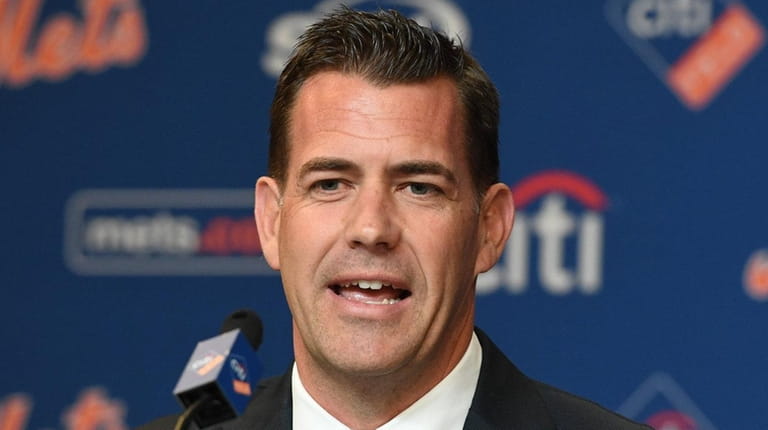
Mets general manager Brodie Van Wagenen speaks during a press conference at Citi Field on Jan. 16. Credit: Kathleen Malone-Van Dyke
As much as the pandemic-shortened season had to do with establishing once-a-century health protocols, it all came down to money, and MLB shaved off as much payroll as possible when commissioner Rob Manfred settled on that 60-game season.
To be fair, the lost revenue with no fans in stadiums was substantial for teams — the Yankees missed out on nearly $400 million in 2020 — and this season also began with reduced capacity in most venues (i.e. less cash).
The residual COVID economics certainly impact these CBA discussions, and just like in 2020, it’s probably going to take the ramped-up pressure of the looming season to reach an accord. If there is an extended lockout, that could mean a condensed free-agent signing flurry in February, with a late start to spring training and a pushed-back Opening Day.

